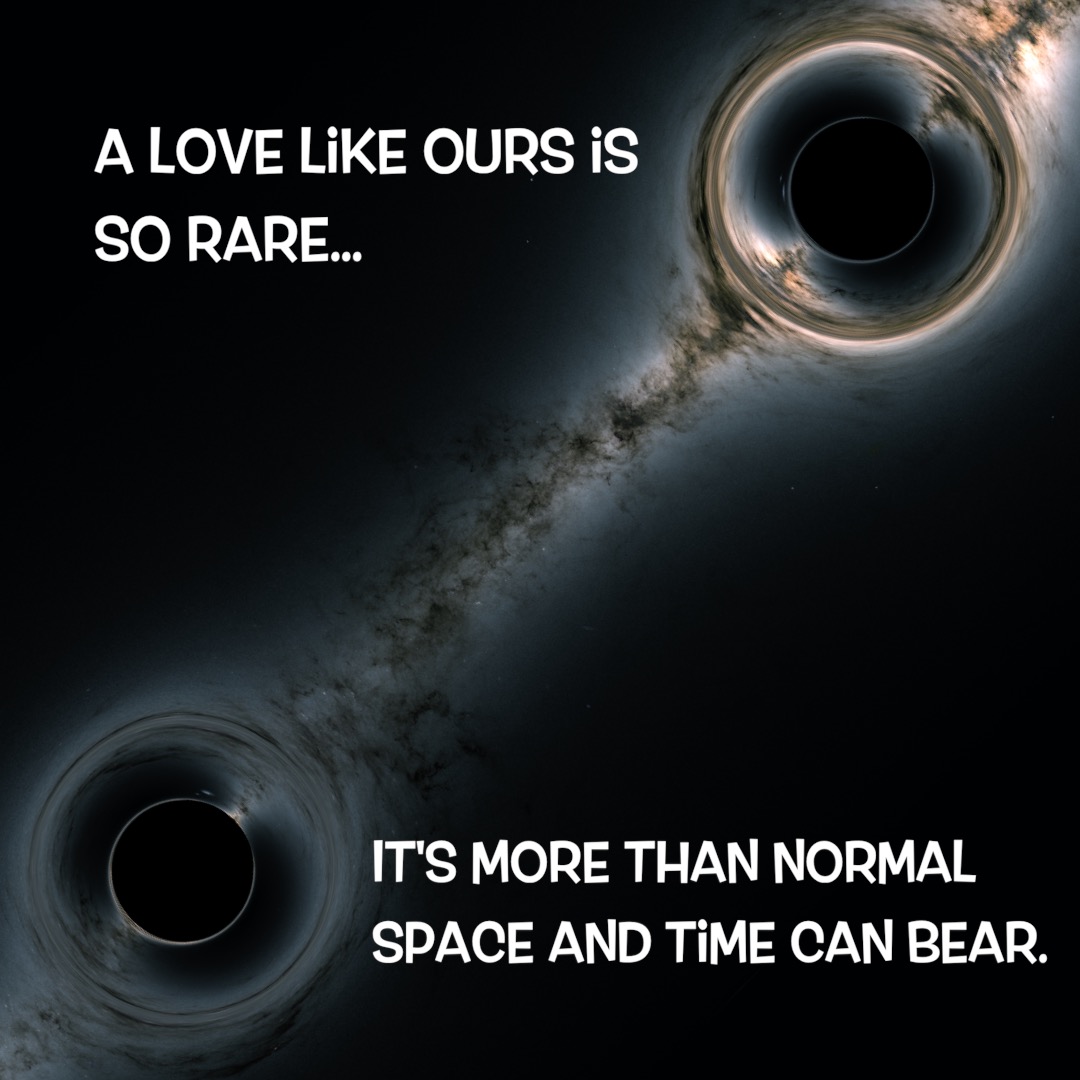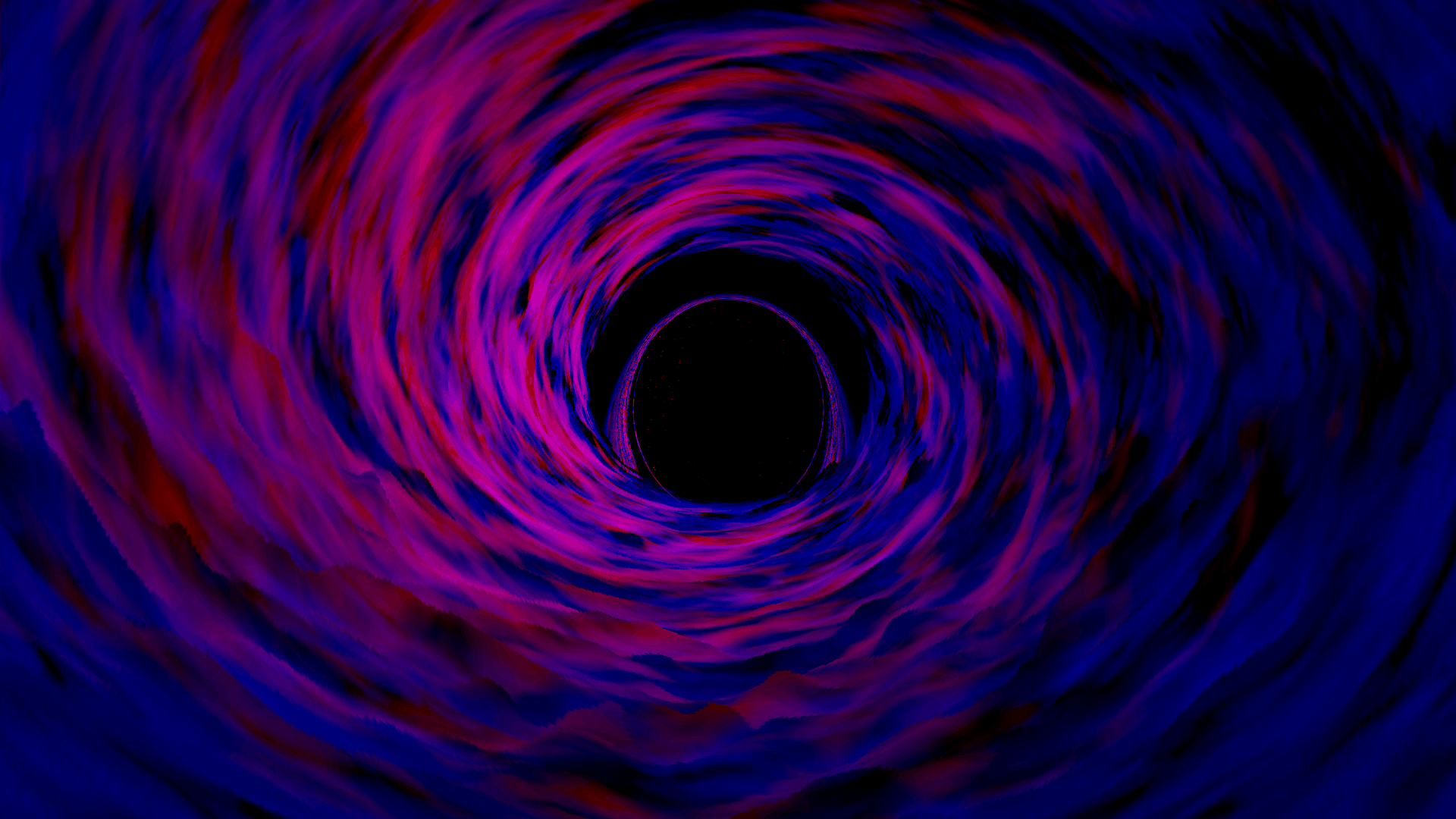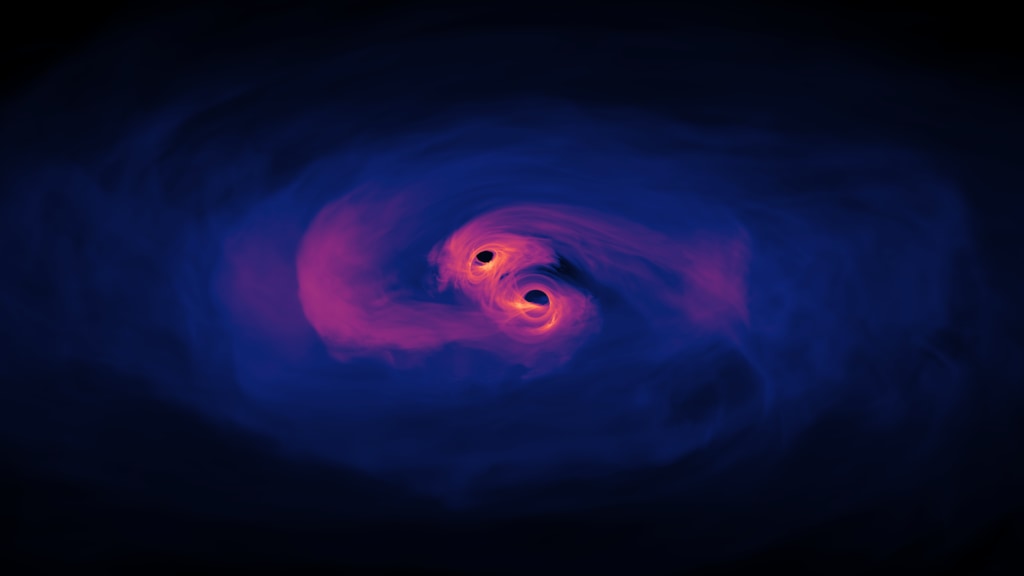New Simulation Sheds Light on Spiraling Supermassive Black Holes
Gas glows brightly in this computer simulation of supermassive black holes only 40 orbits from merging. Models like this may eventually help scientists pinpoint real examples of these powerful binary systems.
Credit: NASA's Goddard Space Flight Center/Scott Noble; simulation data, d'Ascoli et al. 2018
Music: "Games Show Sphere 01" from Killer Tracks
Watch this video on the NASA Goddard YouTube channel.
Complete transcript available.
A new model is bringing scientists a step closer to understanding the kinds of light signals produced when two supermassive black holes, which are millions to billions of times the mass of the Sun, spiral toward a collision. For the first time, a new computer simulation that fully incorporates the physical effects of Einstein’s general theory of relativity shows that gas in such systems will glow predominantly in ultraviolet and X-ray light.
The new simulation shows three orbits of a pair of supermassive black holes only 40 orbits from merging. The models reveal the light emitted at this stage of the process may be dominated by UV light with some high-energy X-rays, similar to what’s seen in any galaxy with a well-fed supermassive black hole.
Three regions of light-emitting gas glow as the black holes merge, all connected by streams of hot gas: a large ring encircling the entire system, called the circumbinary disk, and two smaller ones around each black hole, called mini disks. All these objects emit predominantly UV light. When gas flows into a mini disk at a high rate, the disk’s UV light interacts with each black hole’s corona, a region of high-energy subatomic particles above and below the disk. This interaction produces X-rays. When the accretion rate is lower, UV light dims relative to the X-rays.
Based on the simulation, which ran on the National Center for Supercomputing Applications’ Blue Waters supercomputer at the University of Illinois at Urbana-Champaign, the researchers expect X-rays emitted by a near-merger will be brighter and more variable than X-rays seen from single supermassive black holes. The pace of the changes links to both the orbital speed of gas located at the inner edge of the circumbinary disk as well as that of the merging black holes.
Same as above, without text overlay.
Credit: NASA's Goddard Space Flight Center/Scott Noble; simulation data, d'Ascoli et al. 2018
Same as above, trimmed and formated for Instagram. No text overlay.
Credit: NASA's Goddard Space Flight Center/Scott Noble; simulation data, d'Ascoli et al. 2018

This animated gif rotates a frozen version of the simulation through 360 degrees as viewed from the plane of the disk.
Credit: NASA's Goddard Space Flight Center/Scott Noble; simulation data, d'Ascoli et al. 2018

This animated gif rotates a frozen version of the simulation through 180 degrees and then back, from directly above to directly below the plane of the disk.
Credit: NASA's Goddard Space Flight Center/Scott Noble; simulation data, d'Ascoli et al. 2018
This 360-degree video places the viewer between two circling supermassive black holes around 18.6 million miles (30 million kilometers) apart with an orbital period of 46 minutes. The simulation shows how the black holes distort the starry background and capture light, producing black hole silhouettes. A distinctive feature called a photon ring outlines the black holes. The entire system has a mass about 1 million times the Sun’s.
Credit: NASA’s Goddard Space Flight Center/Scott Noble; background, ESA/Gaia/DPAC
Watch this video on the NASA Goddard YouTube channel.
This 360-degree video places the viewer between two circling supermassive black holes around 18.6 million miles (30 million kilometers) apart with an orbital period of 46 minutes. The simulation shows how the black holes distort the starry background and capture light, producing black hole silhouettes. A distinctive feature called a photon ring outlines the black holes. The entire system would have around 1 million times the Sun’s mass. The background is a view of the entire sky as observed by the NASA's Wide-field Infrared Survey Explorer (WISE).
Credit: NASA’s Goddard Space Flight Center/Scott Noble; background, NASA/JPL-Caltech/UCLA
For More Information
Credits
Please give credit for this item to:
NASA's Goddard Space Flight Center. However, individual items should be credited as indicated above.
-
Producer
- Scott Wiessinger (USRA)
-
Science writers
- Jeanette Kazmierczak (University of Maryland College Park)
- Francis Reddy (University of Maryland College Park)
-
Visualizer
- Scott Noble (USRA/U. Tulsa)
-
Scientist
- Scott Noble (USRA/U. Tulsa)
Release date
This page was originally published on Tuesday, October 2, 2018.
This page was last updated on Wednesday, May 3, 2023 at 1:46 PM EDT.
Series
This page can be found in the following series:Related papers
https://iopscience.iop.org/article/10.3847/1538-4357/aad8b4
https://iopscience.iop.org/article/10.3847/1538-4357/aad8b4



